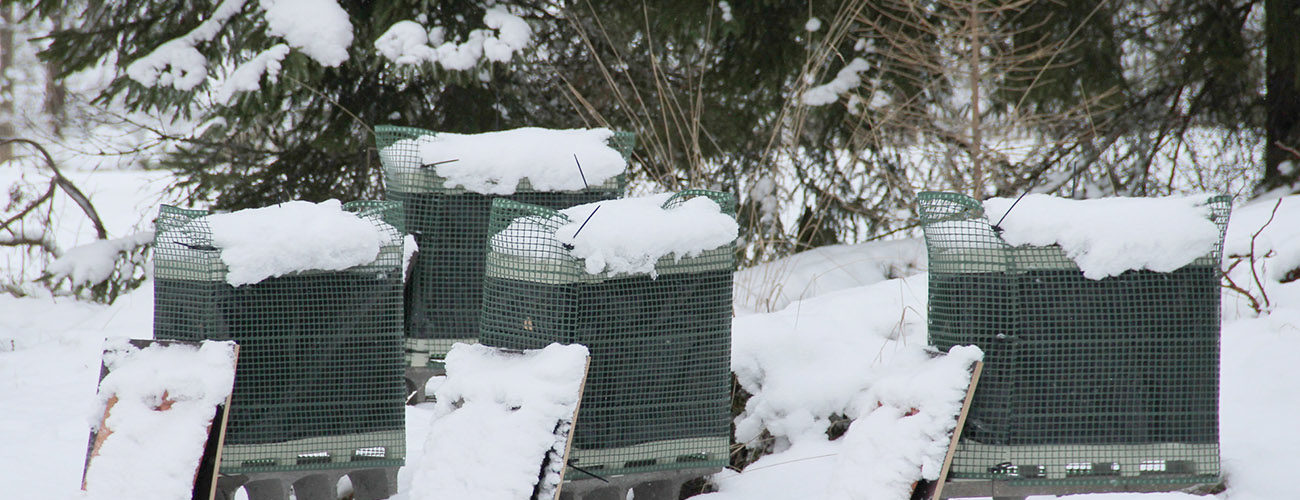Wintering bees (In Finland)

Some factors which affects wintering:
-Strong enough colony
-Feeding which has been in time
-Succesful mite control
-The construction of hive is such that the hive remains dry and the ventilation is not clogged.
Strong enough colony:
From the 20th of July, the queen normally produce bees, which live until the spring. It is important that these fetuses are not split or otherwise removed from the nest.
At the start of feeding, the nest should be full of bees. Their numbers fall sharply during the autumn. When feeding, it is a good sign if there are even bees on the front wall. Sugar will dry faster in comps if there is so many bees top of them. If the nest does not occupy the compartment at full capacity, it may not have enough time dry and cover all the food.
Timely feeding:
As the autumn cools down, the production of honey slows down and, in small nests, it is completely stopped. In addition, evaporating water and covering the cells on the wax cover is work that consumes bees. It’s good to have the summer bees doing the work, who otherwise die in the fall.
Bees must have time to dry and cover all their food for winter. Uncovered food absorbs moisture in the winter and tends to get out of the cells.
Feeding can begin in early August and should be completed by mid-September at the latest.
Hive structure:
Bottom board
Most important thing is that hive does not freeze from below. If you are using traditional wooden boards or similar made from polystyrene the opening should be at least 3cm high from bottom of board. Opening which is lower than that might be blocked by dead bees and condensation water.
With the polystyrene bottom with mesh the opening of the hive can be a shallower because the bottom net provides ventilation. Also, the mesh model and mesh keep the air gap free from ice formation.
Hive Roof:
With polystyrene bottom board with mesh it is commonly used dense plastic film and polystyrene roof. In this case the roof should be warmest place and the moisture condense on the walls and drain from the bottom mesh.
Traditional way with wooden bottom boards is to have softboard with 10cm hole and top of that plastic net and then 5cm of foam. In this case, the idea is that air can be exchanged gravitative through the foam and moisture is thereby lost. Of course, the roof should have ventilation. However, this does not work in severe frost, but dew point is created in the superlon-foam and watered. It may even freeze eventually, causing the ventilation to stop completely. For this reason, some beekeepers have found the upper vents to be good, with a small 1 x 5 cm opening at the top of the body.
Another way is use softboards without holes. These do not allow direct airflow to pass through causing hive become warm. Moisture should still penetrate softboard without dew point and structure remains dry and hive warm. The soft board cannot be one with tarpaper, that one doesn’t absord enough moisture but get wet under paper.
Hive bodies:
Hive bodies doesn’t play as huge role on wintering as roof and bottom boards. In Nordic countries polyhives are popular because it’s good insulation values which of course works both ways, cool in summer warm in winter.